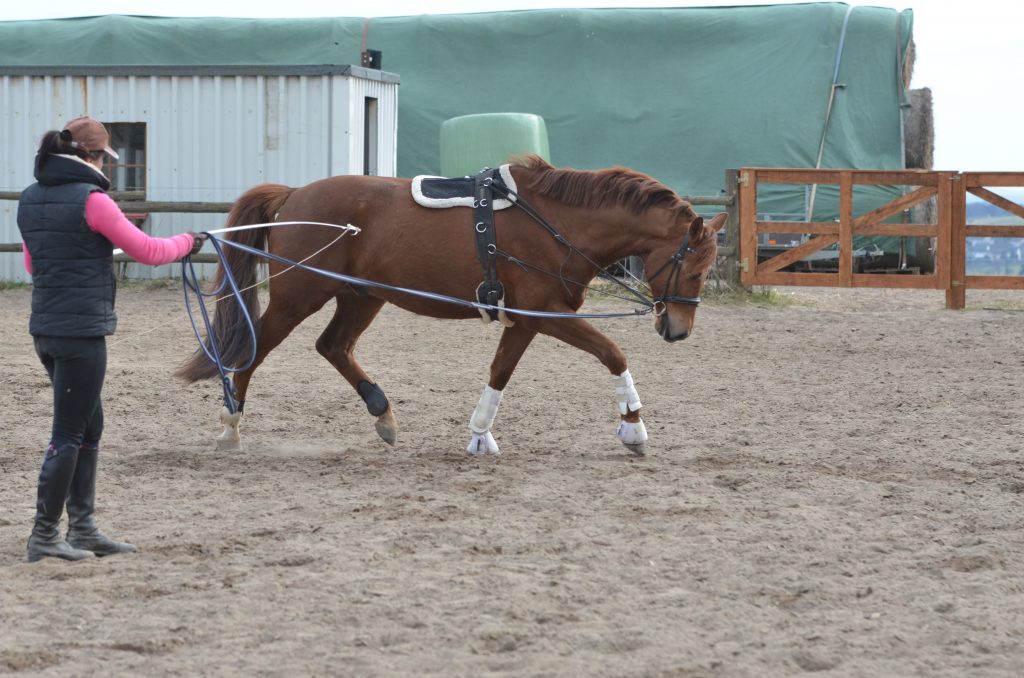We’ve talked before on the basics of handling the whip. Now, we want to give you a deeper insight on the important ways to use the whip, and how your other aids work with it, for maximum effective communication of your lunging aids.
The end of the whip, or lash, should always start back behind you. The only way to use the whip properly is to start with the lash behind you. When you’re in a situation where the lash is in front of you, you’ll want to move it to the back so that you can get the correct angle.

Once you have the lash at the correct angle, you’ll be able to communicate your aids effectively. When you’re using your other aids, such as voice and body language, you want to make sure that you’re not forgetting about the whip and dropping it to the ground. Many lunging instructors will tell you to never, ever set the whip on the ground. This is because firstly, the long lunging whips are not an inexpensive tool and could easily break when stepped on by you or your horse. It’s also easy to forget you have set it down when you’re focused on lunging, which makes it an easy trip hazard or distraction. If you compete in equestrian vaulting, you will get disqualified for placing your whip on the ground.
If you have a horse who is scared of the whip, you do have the option to set it on the ground. If you do this, be sure to toss it as far outside of your circle as possible to avoid the possibility of the whip being stepped on. That is not the ideal situation but it is an option. Ideally, you would carry the whip with you on your shoulder as you move towards the horse, and then place the whip in front of the lunge line to cue him to stop. If he doesn’t know that cue yet, you can place the whip on your shoulder and use only your body language and a half-halt to get him to stop.
Alternatively, if your horse is one who doesn’t respect the whip as a cue to stop, your next step should be to step closer to him to make the circle smaller. Remember that you have multiple aids in helping your horse to stop – your voice, your whip, your half-halts, and your body language. You use your body language to show your horse the speed you would like him to go. When your shoulders are open and your arms are out, your horse should be moving forward. Your whip should always be kept in a straight line flowing out through your arm as a forward driving aid.

When you’re ready for your horse to slow down, then you close your shoulders and bring your arms in. You can also step slightly in front of your horse on the circle. Your horse will learn that these body language cues, accompanied by your voice and your whip, means that he needs to slow down or do a downward transition. Keep in mind that you should use your aids as quickly as possible, and that your goal is to always go back to the open-arm position.
Want to watch our newest YouTube video on perfecting your use of the whip? Check it out here.
Interested in learning more about the correct body language for lunging? Check out our YouTube video here.
